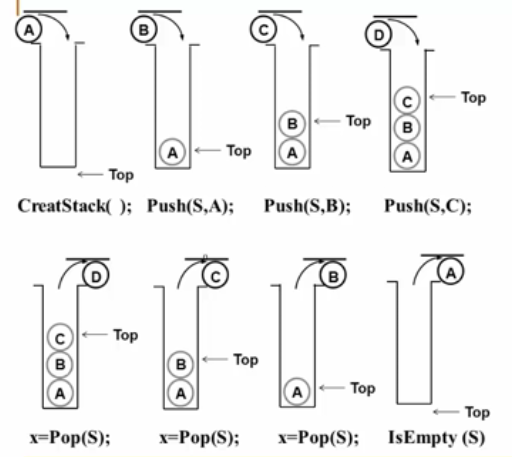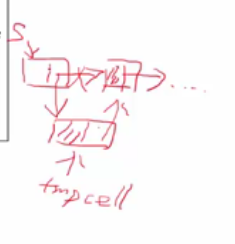本文最后更新于:5 个月前
概念

主要操作
储存结构通常由一个一维数组和一个记录栈顶元素位置的变量组成
入栈
1
2
3
4
5
6
7
8
9
10
11
12
13
14
15
| #define MaxSize <最大元素个数>
struct SNode{
ElementType Data[MaxSize];
int Top;
};
void Push(SNode* PtrTop,Element item)
{
if(PtrTop->Top==MaxSize-1){
cout << "堆栈满";
return ;
}else{
PtrTop->Data[++(PtrTop->Top)]=item;
return ;
}
}
|
出栈
1
2
3
4
5
6
7
8
9
| ElementType Pop(SNode* PtrTop)
{
if(PtrTop=-1){
cout << "栈为空";
return ;
}
else
return (PtrTop->Data[PtrTop->Top--]);
}
|
链表实现堆栈
栈的链式存储结构实际上是一个单链表,叫做链栈。
Top在链表头上。

1
2
3
4
5
6
7
8
9
10
11
12
13
14
15
16
17
18
| struct SNode
{
ElementType Data;
SNode* next;
};
SNode* CreateStack()
{
SNode *PtrTop;
PtrTop=(SNode*)new SNode;
PtrTop->next=NULL;
return PtrTop;
}
SNode* IsEmpty(SNode PtrTop)
{
return (PtrTop->next == NULL);
}
|
入栈
1
2
3
4
5
6
7
8
| void Push(ElementType item,SNode* PtrTop)
{
SNode* p;
p=(SNode*)new SNode;
p->next=PtrTop->next;
p->Data=item;
PtrTop->next=p;
}
|
出栈
1
2
3
4
5
6
7
8
9
10
11
12
13
14
15
| ElemtType Pop(SNode* PtrTop)
{
SNode* FirstCell;
ElementType TopElem;
if(IsEmpty(PtrTop)){
cout << "堆栈为空";
return NULL;
}else{
FirstCell=PtrTop->Next;
PtrTop->next=FirstCell->next;
TopElem = FirstCell->Data;
delete FirstCell;
return TopElem;
}
}
|



